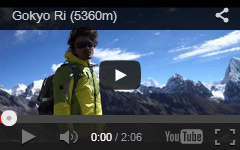Nepal General Information
Nepal is a landlocked country in Southern Asia, between the Tibet autonomous region of China and India. It contains eight of the world's 10 highest peaks, including Mount Everest - the world's tallest - on the border with Tibet, and Lumbini, the birth place of Gautama Buddha, the founder of Buddhism. Nepal recently was declared a republic and has abolished the monarchy.
Geography
Nepal has the elevation of 8848 metres, which is Mt. Everest, and regions which has elevation of 60 metres squeezed into 500 kilometres making it culturally, geographically and naturally diverse.
Elevation Zones
Nepal has been divided into elevation zones, south to north:
Outer Terai - Level plains, a cultural and linguistic extension of northern India. Nepali is spoken less than Awadhi and Bhojpuri dialects related to Hindi and Maithili. Lumbini, Buddha's birthplace and Janakpur, Sita's birthplace are in this zone. Other cities -- Dhangadhi, Nepalgunj, Bhairawa, Butwal, Birgunj, Janakpur and Biratnagar -- are transportation hubs and border towns more than travel destinations. Nevertheless the Terai may offer opportunities for intimate exposure to traditional Indian culture that have become less available in India itself.
Siwalik Range or Churia Hills - the outermost and lowest range of foothills, about 600 m (2,000 ft) high. Extends across the country east to west but with significant gaps and many subranges. Poor soils and no agriculture to speak of. No developed tourist destinations, however the forests are wild and the sparse population of primitive hunters and gatherers is unique.
Inner Terai - large valleys between the Siwaliks and higher foothills to the north. The Dang and Deukhuri valleys in the Mid West are the largest, offering opportunities to experience Tharu art and culture. Chitwan south of Kathmandu is another of these valleys, known for Royal Chitwan National Park where tigers, rhinos, crocodiles, deer and birds can be observed. Originally these valleys were malarial and lightly populated by Tharus who had evolved resistance and developed architectural and behavioral adaptations limiting exposure to the most dangerous nocturnal mosquitos. Suppression of mosquitos with DDT in the 1960s opened these these valleys to settlers from the hills who cleared forests and displaced and exploited Tharus. Nevertheless remoter parts of these valleys still have a Garden of Eden quality - forests broken by indefinite fields, lazy rivers, fascinating aboriginal peoples.
Mahabharat Range - a prominent foothill range continuous across the country from east to west except for narrow transecting canyons, with elevations ascending up to 3,000 m (10,000 ft). Steep southern slopes are a no-man's land between lowland and Pahari (hill) cultures and languages, which begin along the crest and gentler northern slopes. Given clear skies, there are panoramic views of high himalaya from almost anywhere on the crest. Underdeveloped as a tourist venue compared to India's 'Hill Stations', nevertheless Daman and Tansen are attractive destinations.
Middle Hills - Valleys north of the Mahabharat Range and hills up to about 2,000 m (6,500 ft). are mainly inhabited by Hindus of the Bahun (priestly brahmin) and Chhetri (warriors and rulers) castes who speak Nepali as their first language. Higher where it becomes too cold to grow rice, populations are largely Magar, Gurung, Tamang, Rai or Limbu, the hill tribes from which the British recruited Gurkha soldiers while the soldiers' families grew crops suited to temperate climates. Men in these ethnic groups also work as porters or may be herders moving their flocks into the high mountains in summer and the lower valleys in winter. Trekking through the hills is unremittingly scenic with streams and terraced fields, picturesque villages, a variety of ethnic groups with distinctive costumes, and views of the high himalayas from high points.
Valleys - Kathmandu and to the west Pokhara occupy large valleys in the hills. The Kathmandu Valley was urbanized long before the first Europeans reached the scene and has historic neighbourhoods, temple complexes, pagodas, buddhist stupas, palaces and bazaars. Its natives are predominantly Newar farmers, traders, craftsmen and civil servants. Newar culture is an interesting synthesis of Hindu and Buddhist elements. Unfortunately a range of hills north of this valley limit views of the himalaya. Pokhara has fewer urban points of interest but outstanding views of the nearby Annapurna Himalaya. Pokhara's Newar population is confined to bazaars. Elsewhere upper caste Hindus dominate, whose ancestors probably were Khas peoples from far western Nepal. Both valleys offer excellent opportunities to experience Nepal without strenuous trekking. Narrower valleys along streams and rivers are important rice-growing centres in the hills. There is a limited amount of this land and most of it is owned by upper caste Hindus.
Lekhs - Snow occasionally falls and lasts days or weeks in the winter above 3,000 m (10,000 ft), but melts away in summer below about 5,500 m (18,000 ft). Treeline is about 4,000 m (13,000 ft). This zone is used for summer pasturage but not year-round habitation.
North of the lekhs, the snowy high himalayas rise abruptly along a fault zone to peaks over 6,700 m (22,000 ft) and even over 8,000 m (26,000 ft). Himalaya means 'abode of snow', which is uninhabited. Valleys among the peaks are inhabited, especially along trade routes where rice from the lowlands was traded for salt from the Tibetan Plateau along with other goods. Trade has diminished since China annexed Tibet in the 1950s but catering to trekkers and climbers has become an economic engine. People living along these routes have Tibetan affinities but usually speak fluent Nepali.
Trans-Himalaya - Peaks in this region north of the highest himalayas in central and western Nepal are lower and gentler, mostly around 6,000 m (20,000 ft). Valleys below 5,000 m (17,000 ft). are inhabited by people who are essentially Tibetan and have adapted to living at much higher elevations than other Nepalis. Roads have not yet penetrated this far and travel is expensive by air or arduous on foot. Nevertheless, it is a unique opportunity to experience a very significant and attractive culture in spectacular surroundings.






